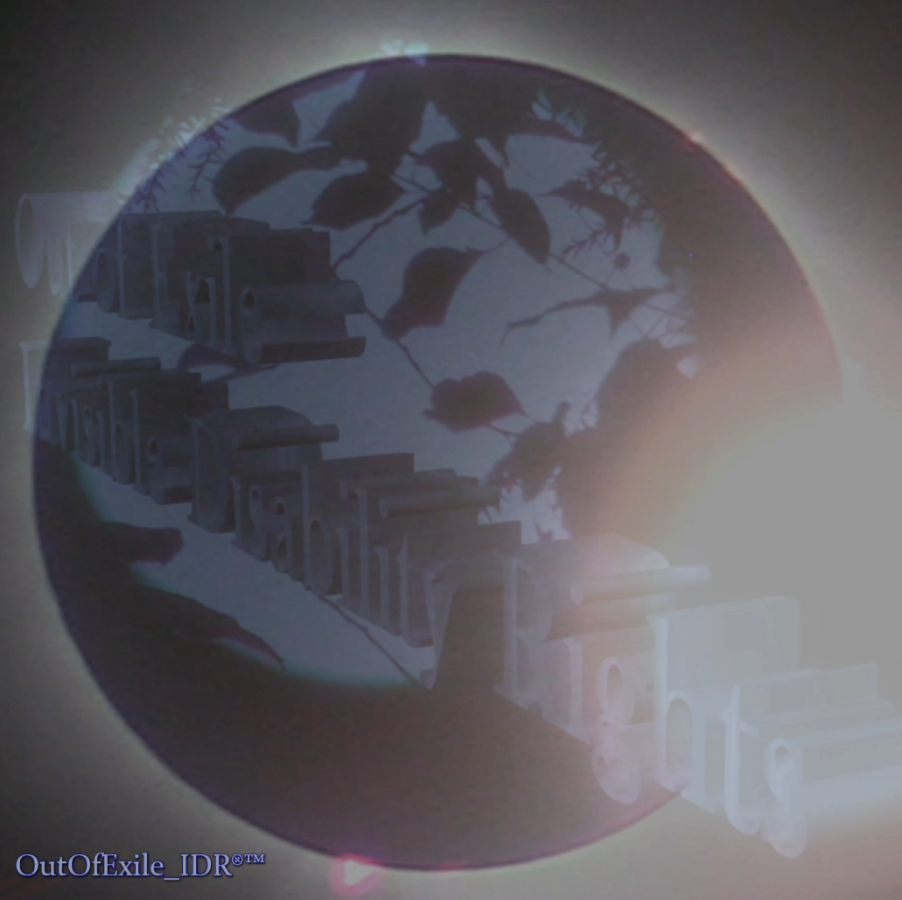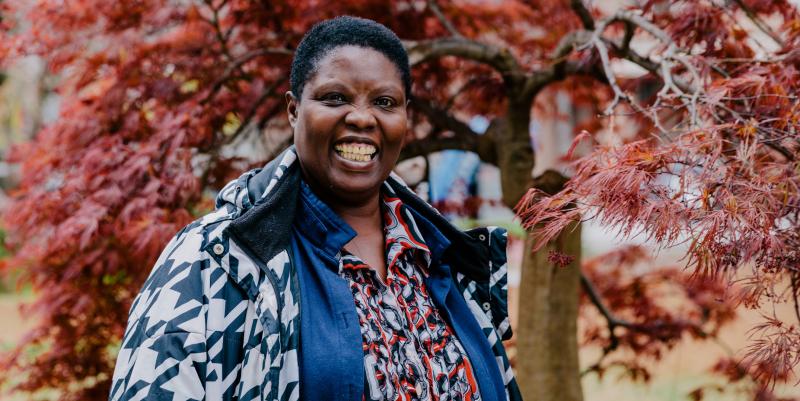Thinking of Lois Curtis today and remembering her resilience and determination. She is deserving of every person’s respect. If you don’t know who she is, take some time to discover.
Without her heroic efforts, there would be no Olmstead Act protecting the right to freedom for people with invisible disabilities (IDs) and mental health challenges. Lois, and her co-plaintif Elaine Wilson, took the battle against societal, and institutionalized ableism all the way to the Supreme Court and won. There is, however, much that still needs to be accomplished on the trail that Lois blazed.
Lois Curtis was born in Georgia, on July 14, 1967, with developmental/cognitive disabilities, and was later diagnosed with schizophrenia. Until the age of 11, she lived with her family and attended public school which she loved, but behavioral issues stemming from her disabilities soon caused her to be institutionalized. Lack of understanding and lack of services in the community for individuals with invisible disabilities and mental health challenges are the main reasons that Lois spent most of her life essentially incarcerated in institutions for a health issue.
By age 11, Lois was repeatedly in and out of Georgia Regional Hospital, and not long after was institutionalized in other similar facilities throughout her adolescence, as well as most of her life. She was regularly sedated through her teen years. Her outlook only continued to darken as her misery grew–she was trapped in a “healthcare” prison due to lack of understanding and accommodation. The use of weaponized pharmaceuticals and other inhumane treatments to “control” individuals unnecessarily has been the fate of many with invisible disabilities throughout history. If you think this has changed entirely, you are sadly mistaken about the medical “industry”. If there’s no individual accommodation for each person’s specific disabilities, the system is fundamentally broken and actively harmful.
Eventually, doctors concurred that Lois no longer needed, nor did she fit the criteria for, involuntary institutional “incarceration”, but there were no home/residential settings or home care supports for her and others with similar disabilities affecting the mind. Because the entire community surrounding people with invisible disabilities did, and continues to, ignore and drop the ball regarding our need for proper services, Lois was basically an inmate in a prison disguised as a hospital for decades of her life. Imagine if you were diagnosed with brain cancer. Would the best treatment be to lock you up and throw away the key? What are those without these types of disabilities doing to change the rules, fight for fair pay, accommodate, and remove the stigmatude1, leaving only love and acceptance in its wake? Real change won’t happen without action from the abled.
During the many years that Lois Curtis was held prisoner because of her health, she developed a close friendship with another “patient” named Elaine Wilson. Together, the two of them stood in defiance against an ivory tower of injustice for the invisibly disabled community. With the help of, surprisingly, a Legal Aid Society attorney, they took their fight all the way to the Supreme Court, but not until Lois continuously, politely badgered attorney Sue Jameison, melting her heart and convincing her to take the case.
Having much personal history dealing with state disability protection agencies, legal aid societies and their funders like Legal Services Corp.gov LSC.gov, polite badgering seems to be the only way for many people with invisible disabilities to get accommodation and legal representation to protect themselves. I’ve had to play this legal wrangling game many times.
Finally, in 1995, Lois and Elaine Wilson’s determination paid off and Atlanta Legal Aid filed a case against Georgia Department of Human Resources Commissioner, Tommy Olmstead. The complaint reasoned that the state was violating their rights pursuant to the Americans with Disabilities Act (ADA section 504), arguing that people with invisible disabilities cannot be forcibly institutionalized. The decision also requires municipalities and state governments to provide community-based services, affording individuals like Lois Curtis the right to live in their own home, and enjoy full “community integration”. The ruling applies to any facility/institution that receives federal funding.
Four years after filing, the decision was handed down in 1999, and Lois Curtis and Elaine Wilson won their freedom, and the right to freedom for every person with developmental and invisible disabilities. The decision is touted as the “Brown Vs. Board of Education” of Invisible Disability Rights. In the years following this historic Supreme Court case, Lois worked with the US Department of Health and Human Services Office of Civil Rights (HHS OCR) on other Olmstead cases. She was also an honored guest at the White House during the Obama administration.
Despite the circumstances throughout her life, Lois always seemed to light every room she entered. Her thankful and simple approach to life, is an example everyone could learn from. Lois in her own words:
“Well, I make grits, eggs, and sausage in the morning and sweep the floor. I go out to eat sometimes. I take art classes. I draw pretty pictures and make money. I go out of town and sell me artwork. I go to church and pray to the Lord. I raise my voice high! In the summer I go to the pool and put my feet in the water. Maybe I’ll learn to swim someday. I been fishing. I seen a pig and a horse on a farm. I buy clothes and shoes. I have birthday parties. They a lot of fun. I’m not afraid of big dogs no more. I feel good about myself. My life a better life.”
– Lois Curtis, faams.org
Unfortunately, like so many with disabilities, Lois lived in poverty all of her life and on November 3, 2022, she died in poverty. I remember seeing the mutual aid requests for her on social media just before her passing. The strength and courage of Lois Curtis will always inspire me to keep fighting for IDR. She was a champion of change for invisible disability rights and forever will be. Thank you, Lois.
- “My brain is not always helpful, but this flub combining two words was.
Stigmatude: The attitude personified by lack of understanding and acceptance of people living with invisible disabilities and mental illness, that ableists and many others perpetuate.”
-OutOfExile_IDR™
↩︎
OutOfExile_IDR™ © 2024

All writings, images, graphics, logos, and other content by: OutOfExile_IDR™ unless credited otherwise.
All Rights Reserved. No Scraping.
Image Courtesy of Anthesis
